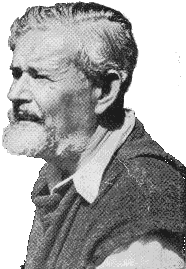 Weblinks
to The Once and Future King:
Weblinks
to The Once and Future King:
T.H. White's The Once and Future King (1958) was arguably the most popular English-language retelling of Arthurian legend of the twentieth century. The inspiration for both Disney's animated Sword in the Stone (1963) and Lerner and Loewe's musical Camelot (1960), it consists of four parts, the first three of which were originally published separately as The Sword in the Stone (1938), The Witch in the Wood (1939; retitled The Queen of Air and Darkness when incorporated into The Once and Future King), and The Ill-Made Knight (1940). The fourth part, The Candle in the Wind, first appeared in print as the final segment of The Once and Future King. White's intended conclusion to the tetralogy, The Book of Merlyn, was completed in 1941 but remained unpublished until 1975, eleven years after White's death in 1964. When his publishers declined to include The Book of Merlyn in The Once and Future King, White incorporated some of its social commentary into his revision of The Sword in the Stone (which may explain why ten-year-old Arthur acts so adult-like in the ants and geese segments).
T.H. White retells the Arthurian legend in
a relatively traditional fashion derived primarily from Malory.
It is striking for its decidedly pacifist bent, a reflection of White's
personal convictions and political stance in the years leading up to and
including World War II (among the anachronisms
in The Once and Future King is a reference to Hitler). Also notable
is the relatively unsympathetic treatment of some of the female characters.
 Weblinks
to The Once and Future King:
Weblinks
to The Once and Future King:
England Have My Bones: Jason W. Moulder and Marcus Schaefer's T. H. White PagesMoulder and Schaefer's Once and Future King Page
Moulder and Schaefer's The Book of Merlyn Page
Moulder and Schaefer's T. H. White Bibliography
Moulder and Schaefer's T. H. White Biography Page
Michael Anderson and John William Sutton's T. H. White Glossary
Ian Patterson on T.H. White at Queens' College, Cambridge
T. H. White Page from "King Arthur: A Man for the Ages" site